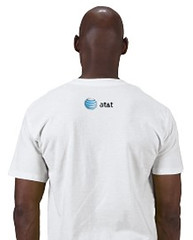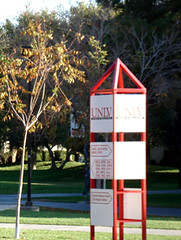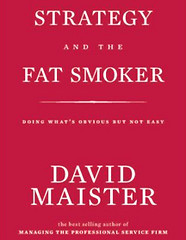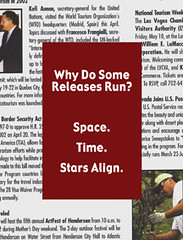The old number was 80, but the new number might be significantly higher. One station general manager told me it is as high as 240 impressions before a message begins to stick.
That’s a boatload. And advertisers, marketers, and media are all working hard to keep up by finding new places to tap space for advertising. So if you aren’t excited by advertising that pops up on the bottom of the screen, stay tuned — Bravo tests a new L-shaped bar that will potentially deliver even more ad messages. Not everyone is happy about it.
"It's distracting. It's frustrating, and you feel helpless," said Robert Weissman, managing director of Commercial Alert, told Advertising Age. According to their Web site, the non-profit’s aggressive mission is to keep commercial culture within its proper sphere.
Part of the reason for the increased proliferation of advertising is part Internet (with Facebook leading the charge) and part consumer behavior toward network television. The American Advertising Federation is currently running a smart poll that asks its readers if they use their DVRs to fast-forward commercials. So far, more than 85 percent say they do (and AAF SmartBrief readers are predominantly advertising people).
Of course, it’s not limited to entertainment. AT&T is experimenting with income marketing, a concept we’ve tested for non-profit efforts over the last year. Taking it a step sideways and using custom-product generator Zazzle. Adweek describes it as an “Atmosphere BBDO-created Web site that invites visitors to construct their own make-believe, mash-up localities.”
If you like the idea and purchase a shirt with your custom mash-up, you’ll also sport the AT&T brand on the back of your shirt. Allowing consumers to partly embellish the design is pretty creative in engaging consumers.
However, when you start to stack it all up, one starts to wonder if marketers are becoming a bit delusional over the values of frequency and reach at the expense of the value proposition and message. Who knows? Perhaps advertisers are unknowingly searching for a tipping point when seeing a brand name everywhere might create a negative impression. (Think Pairs Hilton or Britney Spears saturation).
Then again, if there is no tipping point and seeing identity-driven banners anywhere and everywhere really does mean something to consumers, I might start selling a piece of dry erase board when I’m teaching again in spring. A badge on my suit? Well, that costs extra.

That’s a boatload. And advertisers, marketers, and media are all working hard to keep up by finding new places to tap space for advertising. So if you aren’t excited by advertising that pops up on the bottom of the screen, stay tuned — Bravo tests a new L-shaped bar that will potentially deliver even more ad messages. Not everyone is happy about it.
"It's distracting. It's frustrating, and you feel helpless," said Robert Weissman, managing director of Commercial Alert, told Advertising Age. According to their Web site, the non-profit’s aggressive mission is to keep commercial culture within its proper sphere.
Part of the reason for the increased proliferation of advertising is part Internet (with Facebook leading the charge) and part consumer behavior toward network television. The American Advertising Federation is currently running a smart poll that asks its readers if they use their DVRs to fast-forward commercials. So far, more than 85 percent say they do (and AAF SmartBrief readers are predominantly advertising people).
Of course, it’s not limited to entertainment. AT&T is experimenting with income marketing, a concept we’ve tested for non-profit efforts over the last year. Taking it a step sideways and using custom-product generator Zazzle. Adweek describes it as an “Atmosphere BBDO-created Web site that invites visitors to construct their own make-believe, mash-up localities.”
If you like the idea and purchase a shirt with your custom mash-up, you’ll also sport the AT&T brand on the back of your shirt. Allowing consumers to partly embellish the design is pretty creative in engaging consumers.
However, when you start to stack it all up, one starts to wonder if marketers are becoming a bit delusional over the values of frequency and reach at the expense of the value proposition and message. Who knows? Perhaps advertisers are unknowingly searching for a tipping point when seeing a brand name everywhere might create a negative impression. (Think Pairs Hilton or Britney Spears saturation).
Then again, if there is no tipping point and seeing identity-driven banners anywhere and everywhere really does mean something to consumers, I might start selling a piece of dry erase board when I’m teaching again in spring. A badge on my suit? Well, that costs extra.


































